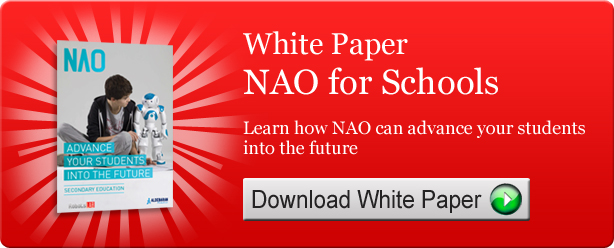Faithful readers of this column have repeatedly heard us say how important NAO Robot is to research and education. Doubters among you need only read on to learn how NAO is helping changing life aboard the International Space Station.
But first allow us a short digression: Our local coffee shop has a high turnover in baristas. This leads to complaints from steady customers who after a period of time have finally managed to train the baristas to mix their morning drinks correctly each time without constant reminders. Whether it is allowing room for cream with black coffee or knowing when to use non-fat whip cream in a Cappuccino, regular customers don’t like drink surprises; they lead to bad feelings all around, and lost customers. Autobiographical memory, that is to say memory consisting of episodes recollected from an individual's life consisting of personal experiences, specific objects and people and events experienced at a particular time and place ( thanks to our friends at Wiki for this paraphrased definition) is important to any coffee shop’s bottom line.
If autobiographical memory is important in so trivial a matter as drink preparation, consider the effects of its lack thereof on the International Space Station. The station is controlled by several governments and operated by crew members from all across the globe. Have you ever wondered how many different mother-tongues have been spoken there as it whirled around the world? Human crews come and go, but some of the problems and many of the procedures never change. Imagine the money spent preparing each new occupant for these problems and procedures. Imagine the saving in money, time and probably lives if a crewmember capable of sustained autobiographical memory remained aboard the station at all times to assist the new oncoming crews. A crewmember for whom all languages are equally understandable and who would never forget a thing that happened on his watch! Of course we are not talking about any of us ordinary mortals here. Subject to forgetfulness in or out of space and tending to wither physically while weightless in space, humans simply can’t cut it--but robots can!
And no, we’re not going to try to convince you that NAO is that robot! NAO is only four-feet tall; much too small to assist as another humanoid on the International Space Station. There is already a robot aboard that is expected to eventually serve in that capacity. It’s name is Robonaut 2. Robonaut 2 was sent up in 2011 and installed on a pedestal, capable of moving its long, dexterous arms and little else. It has been improved upon since that date. In 2014 two legs with seven joints each and a span of 9 feet were attached in hopes of it soon taking over the dangerous space walks from the human astronauts. Now with legs and arms and standing taller than a man, it is almost ready for prime time. Almost! Because, just like the Scarecrow in the Wizard of Oz, Robonaut needs a brain!
Well to be honest, just like the Scarecrow, Robonaut already has a brain; its programming allows for autonomous operation. What it still can’t do efficiently is learn from experience as we humans can with our autobiographical memory. That’s where little NAO comes in.
Using NAO, researchers in France, home of NAO’s developer Aldebaran, have designed software to help robots learn from interacting with the world as do humans, visually and with the use of language, not just programming. What they hoped to accomplish with the software was demonstrate”... five levels of learning: the ability to learn low-level tasks from humans, integrate those tasks into a composite plan, perform the task in an efficient manner, transmit the knowledge to other humans, and know how to answer questions from humans unfamiliar with the task.” In fact that’s exactly what they did. NAO learned how to perform a simple task--in this case replacing electronic cards--by interacting with a human teacher, not a programmer. Then NAO turned around and taught another human how to do it in the same manner, by demonstrating and answering questions.
In time Robonaut 2 will learn to interact with human astronauts the way NAO did with the French researchers, saving the space program a lot of time, money and making the International Space Station a safer place to work. Autobiographical memory is an important concept--and our little robot NAO is on the cutting edge!

